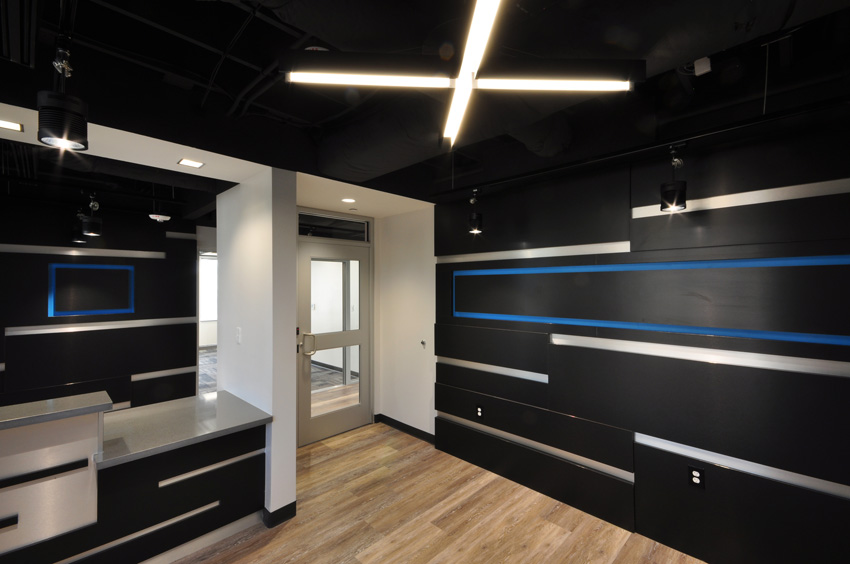Hard Walls, High Style
Ball Impact Resistance: NEMA LD3.8
In this test, an 8-ounce (224-gram) steel ball is dropped from a certain height with no surface fracture in three replicate drops. The higher the number of inches in the result, the more resistant the material is to fracture.
Examples of impact resistance include:
- 36 inches: Solid surfacing
- 53 inches: Decorative protection panels with a fiberglass core
Fire E84 Class A
This is the Standard Test Method for Surface Burning Characteristics of Building Materials.
The most stringent rating available for building materials is Class A. Class A materials have a flame spread rating (FSR) of 0 to 25. Flame spread is used to describe the surface burning characteristics of building materials and is one of the most tested fire performance properties of a material. The test for flame spread is sometimes referred to as the Steiner tunnel test. This test is applicable to exposed surfaces such as walls and ceilings.
For best results when specifying decorative protection panels, choose a product with a Class A fire rating.
Chemical Spot Test: SEFA 8.1
This test was developed by the Scientific Equipment & Furniture Association to evaluate the resistance a finish has to chemical spills. The procedure tests samples for chemical resistance using 49 different chemical reagents. The results of the test constitute the rating system:
- Level 0: No detectable change
- Level 1: Slight change in color or gloss
- Level 2: Slight surface etching or severe staining
- Level 3: Pitting, cratering, swelling, or erosion of coating; obvious and significant deterioration
For best results in specifying a high-pressure decorative laminate for vertical surfaces, choose a product with a rating of 0.
Bacterial Growth Resistance: ASTM-G22
This is the Standard Practice for Determining Resistance of Plastics to Bacteria.
This is especially important for health care, food services, or any location where human and material contact will be present. In this test, the material is inoculated with various bacteria and intubated at 95 degrees Fahrenheit (35 degrees Celsius) at 85 percent humidity. After the period, the material is examined to determine if any growth of the bacteria has occurred.
For best results, choose a product whose ASTM-G22 results are: “No growth observed.”
GREENGUARD Gold Certification
According to GREENGUARD, the Gold Certification standard “includes health-based criteria for additional chemicals and also requires lower total VOC emissions levels to help ensure that products are acceptable for use in environments like schools and health-care facilities.”
For best results, choose a product with a GREENGUARDGold Certification
Other Laminate Choices for Vertical Surfaces
Besides decorative protection panels, a number of other options are available for walls. They include metal laminates, writable laminates, and custom laminates. Let’s look at examples of each.
Metal Laminate Wall Panels
Metal laminate wall panels deliver lustrous color and sheen with textures reflecting energy, modernity, and a feel for craftsmanship. They are useful for adding flair to vertical applications for walls, furniture, retail fixtures, signage, exhibits, and displays.











